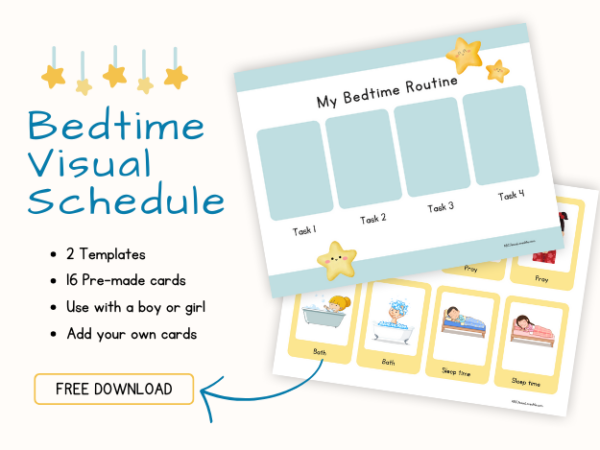When I think back to those early years of parenting, the word that comes to mind is exhaustion. All. Day. Long. I was simply trying to keep our four kids alive. Well, I did more than that, but it often felt like a major victory just to make it through the day! And while there were plenty of mistakes made (so many!), I’m thankful that we prioritized one thing—sleep.
From the beginning, we established a bedtime routine. Through plenty of trial and error, we figured out how to help our kids stay in their beds through the night. This gave everyone the rest they needed, cut down on illness, gave my husband and me quality time in the evenings, and provided me quiet time with the Lord before little feet hit the floor in the morning.
Over the next three weeks, I’m digging into the archives to share what we learned about bedtime routines, handling early risers, and actually training kids to stay in bed until it’s time to get up. If you’re feeling worn out and desperate for better sleep in your home—you’re in the right place.
Let’s start with bedtime.
Read the episode transcript.

How to Build a Bedtime Routine That Works
A bedtime routine usually includes three key parts:
- Getting ready for bed (pajamas, brushing teeth, maybe a bath)
- One last drink/snack and bathroom or diaper change
- Winding down with reading, talking, and prayer—either one-on-one or as a family for Bible devotions.
Before you begin bedtime training, sit down with your spouse and talk about bedtime. What are your expectations? Can your child sleep on the floor? Should they ask to use the restroom at night or go on their own? What is an absolute and what can you compromise on? Decide these details together before starting any training. Being on the same page is half the battle.
How to Introduce a Bedtime Routine
Step 1: After you’ve planned your routine (e.g., pajamas, teeth, read, pray), allow extra time the first night to introduce the new procedure. Make it enjoyable! If possible, use a visual schedule (free download below) with pictures to help your child know what comes next. If you have multiple children, consider reading the Bible together first, then tuck each child in individually—alternating nights between parents if possible.
Step 2: Once you’ve finished the routine and given that final hug, it’s time to stop talking. No more kisses, no more reasoning. If your child gets up, gently take their hand and return them to bed—without speaking. After a few consistent nights, the “get out of bed” game usually loses its appeal.

Bedtime Sleep Tips That Made a Big Difference
Tip #1: Create the Right Sleep Environment
Blackout curtains help prevent early wakeups from the rising sun. While I occasionally used soft music to settle my kids before sleep, I discourage playing white noise or using a fan all night. Research shows constant noise can impact language development, and kids can become dependent on it.
#2: Monitor Daytime Sleep
I used to think that Bubs woke early because he was getting too much sleep during the day. While this may be true of infants, I learned that an overtired toddler and preschoolers actually sleeps less at night. Once I made sure he got a solid nap (2-3 hours), he started sleeping later in the morning.
#3: Let Go of the Perfect Bedroom Setup
We didn’t have enough bedrooms for every child to have their own space. And sharing didn’t work for everyone—especially Little Man, our sensory-sensitive child. Moving his mattress to the playroom ended up being the best solution for everyone in our home, and I wish we’d done it sooner.
#4: Be Consistent, Even When It’s Hard
Consistency is key. Kids thrive on routine, and bedtime is no exception. Giving in mid-training only teaches them that they can outlast you. Stay the course—it’s worth it for everyone’s rest and peace.
#5: Savor the Time
If I could go back, I’d savor bedtime more. I was often too eager to start my own evening and missed out on those sweet end-of-day moments. They don’t stay little long—take the time to enjoy it.
Bedroom Routine Printable
To help you get started, I created the Bedroom Routine Printable—a simple visual schedule to show your child what to expect and when. Use the 4-step template for younger children and the 8-step template for older kiddos. Then join us back next week when I share tips for little ones who wake with the sun (or before!). I’ll share how we gently shifted early risers into calmer, later mornings.
You’ve got this, mama. We’re in it together.

